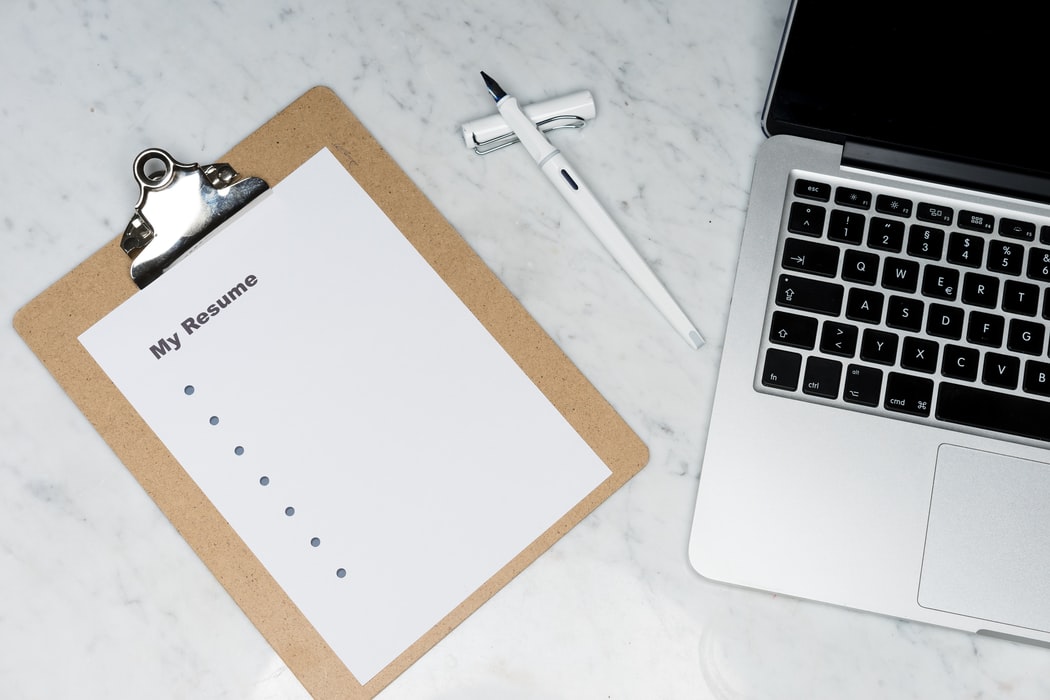


Resume: Format and Content

You should prepare a resume targeted to each of the positions you apply for. Do not be tempted to use the same resume for multiple jobs even when the jobs are very similar. The same position title will involve different skills if it is in different companies. For example, one company might find your volunteer experience more compelling than another company. Remember when you are applying for job, you are not only looking to fit in the position itself, but also in the company and its culture. The targeted resume can be developed from a Master resume. A master resume lists all your experience and skills. You can look at a master resume as a self assessment, what do you know, what skills do you have and what possible jobs or roles are you able to perform. Each job will utilize only a subset of your skills and experiences, but being self-aware of all of them is very essential.
Prioritization
In your resume, more important/relevant sections and points of information must appear on top. And within the same sentence, the more important information should be communicated first. If you are applying for a Manager/supervisor position, your past experience as a manager/supervisor should come first, the number of people you supervised can be considered as second most important, and lastly, where the supervision was done. When you are preparing a resume, you should assume that the employer will not spend too much time reading it, so bring the relevant information first. Employers will only invest their time reading the sections of your resume that make you qualified for the position.
The Opening Statement
It is popularly known that employers spend between 20 and 30 seconds reading your resume. While this might be true, to some extent, employers will spend more time once they have developed interest in your resume. The job applicant has about 20 seconds to elicit interest in the employer. Once the interest has been successfully developed, the employer will spend a little more time reviewing your resume. The opening statement can either be a summary/highlights, an objective or both. Many applicants make the mistake of listing the job title in their 'objective' section. The objective should be a sentence that provides a more general picture of what kinds of careers your skills and experience fit you best. For example, rather than writing 'International development intern', write 'Keen interest and passion to participate in poverty alleviation and improve the socio-economic status of individuals in developing countries'. This means your objective is not wrapped around a specific job position, instead, it is a cause, a commitment, something you have deliberately prepared yourself for and are ready to defend.
While the objective is usually a sentence, highlights are usually bulleted or numbered points summarizing about 4 (maximum 6) of your skills that make you the best fit for the job. One of the bullets can be related to your education, especially if they is a close connection with the position. Another bullet (or two) can relate to your work experience; previous job you did that gave you the kind of skills that are most relevant for the position you are applying for. You can then include transferable skills in about two bullets. The opening statement should be designed to capture the attention of the employer, it must be both interesting and precise.
Education Information
In the education section, the degree/diploma/certificate you have obtained (or expect to), your area of study / Major/Minor, the institutions you attended, and the years of study can be included. You are supposed to decide the criteria for prioritization. In most job applications, the program of study is more important than the institution you attended. But there are some exceptions where the institution may be more important to showcase than the program of study. For example, if you are applying for an IT job but you have a degree in Linguistics, it might be justifiable to indicate, first, that you attended MIT. Because this will make the employer to become more accepting to your program of study. Another example is if you are applying for a part time job in the cafeteria just opposite your University, indicating that you are a student at that University may be more important than indicating first that you are pursuing a Bachelor of Education degree. Realize that the concept of prioritization is subjective to some extent.
Work Experience/History/Background

This is the most versatile section in your resume. You need to provide your current and previous titles, the organization you worked for and the dates of employment. Like in the Education section above, you need to decide whether the job title is of higher priority than the organization. In most cases, the job title comes first, but there are several situations when the organization you worked for would be of greater priority. For example, if you are looking to change your profession within the same company, it may be beneficial to show that you already work in that organization before you indicate your position title. For any job that you have done longer than one year, you do not need to indicate the months of employment, although adding the months is usually of little harm.
Each position title is followed by a listing of skills obtained/developed during your role in that job. Ensure to never be tempted to list the job duties, as these indicate what was supposed to be done, not what was actually done. You can start each bullet using action verbs, these are terms that describe an action that was performed. It is an active voice rather than a passive one. For example; Completed all quarter-end reconciliations for accounts payables, receivables and fixed assets with great accuracy. The action verbs should be in their past tense for previous jobs and present continuous tense for your present job.
It is advisable to keep the bullets to a maximum of six. Realize that six is a magical number in resumes (and several other written documents), just like three is a magical number in delivering a speech. The ideal number of bullets is four, but six should be considered an optimum maximum.
The applicant should decide whether their education information is more relevant and of greater priority to the position they are applying for than their work experience. As already indicated, there are some circumstances where an applicant is better qualified for a position because of their education, and other situations where the same applicant fits better because of their previous work experience. In your resume, start with the section that is more relevant for the position. If you have a ton of relevant work experience but relatively less education, it is very common to include your education background at the very end of the resume.
Volunteer Work Experience
This section should be organized much like the other work experience section. And depending on the position you are applying for, select specific skills and volunteer position titles to emphasize more than others. The volunteer experience is, in some cases, even more relevant than the other sections. The applicant ought to decide which experience they will showcase first.
Other Categories
Any relevant information that was not captured in the preceding sections can be presented here. It is assumed that this information is considered of less priority than all other preceding sections. Professional development courses, some relevant hobbies, legality status for work, other languages, and any other minor skills. This section becomes more important as a person gains more work or educational experience; when several skills and jobs are not listed in details in the work/education sections.
References
Unless specifically required to do so, it is recommended not to provide references in the first resume that you present for application. One exception to this recommendation is, for example, if the reference(s) will add significant value to your application. If one of your references was a previous employee in the organization you are applying to. The list of references should be available, as a separate detachable page at the interview stage and the applicant should be able to present the references during or after the interview. References must be informed before the applicant attends an interview because the employer might contact them anytime after the interview. If you are on a job hunting spree, and cannot inform your references about each position you have applied for, you can discuss with them the nature of jobs you are looking for and the nature of employers that might contact them. This is not ideal but might be possible in some cases. Because reference information includes personal information, the applicant should be careful when handling the confidentiality. We recommend you use their office information whenever possible and avoid sharing their residential information. In addition, avoid sharing your references with irrelevant people. Except in specific circumstances, reference letters will not sufficiently replace actual references.
Presentation
Presentation generally refers to the appearance of the resume, the sense of order, legibility and overall attractiveness of the resume. You need to retain a good amount of white space, do not jam-pack each page and make it difficult for the employer to find information. Usually, an estimate of around 20% white space is fairly good. Do not use a smaller font especially to squeeze in information. Do not use too many different fonts, or too many font colors, however, do not also use the default font type. Word processing software (such as Microsoft Word) now come with multiple resume templates, select one that you feel comfortable with and make the best out of it. Some jobs may require you to showcase a little more creativity than others. If you are applying for a Graphic designer position, the most basic resume template may fail to portray you as having better, creative designing skills. It is important for applicants to perceive the resume presentation as a curb appeal, the front yard landscaping design, it might not get you the job, but it sure does get you noticed.
So, how many pages again?
We discuss this question last, because, contrary to many people's recommendations, you should worry about the other factors listed above first. Ideally, a resume should be at most 2 pages long. The third page can be a list of references. But, do not leave out very relevant information just because your resume is now three pages long. An employer will definitely be glad to have known about that additional information. This also becomes even more interesting in job applications that blend between a curriculum vitae and a resume.
Careful Career Decisions
Easy Careers. All rights reserved.